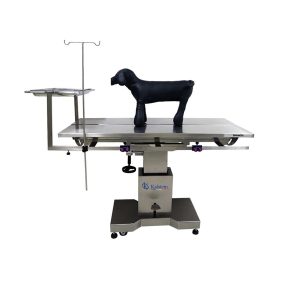Veterinary operating tables are an essential component in any clinic or hospital that offers animal surgical services. However, despite their importance, they are often relegated to the background, leading to problems that could have been avoided. This article will focus on identifying the common issues associated with the use of veterinary operating tables and how to prevent them to enhance efficiency and performance in the surgery room.
Common challenges with veterinary operating tables
One frequent problem with veterinary surgery tables is the lack of adjustability. This can lead to inappropriate postures for veterinarians during operations, increasing the risk of musculoskeletal injuries. Another common issue is the lack of ergonomics, which can result in discomfort for the animal during surgery. Furthermore, many operating tables lack suitable storage areas for surgical tools and instruments, leading to clutter and delays during surgery.
Designing and selecting an appropriate operating table
Choosing the right operating table can make a significant difference in the efficiency and effectiveness of veterinary operations. When selecting an operating table, it’s critical to consider the size and breed of animals that will be most frequently treated. The table should be able to adjust to different heights and positions to meet the needs of both the veterinarian and the patient. Moreover, a good operating table should include a built-in storage area to keep surgical instruments handy and organized.
Maintenance of veterinary operating tables
Good maintenance is key to preventing common issues with veterinary operating tables. This includes regular cleaning to remove any residue and prevent disease spread. Besides cleaning, maintenance also involves regular checking and readjusting the table’s adjustable components to ensure their proper functioning. Regular checks for signs of wear and tear, and performing necessary repairs or replacements is also a recommended practice.
Improving veterinary efficiency through problem prevention
In conclusion, preventing issues with veterinary operating tables can dramatically improve efficiency and performance in the surgery room. From choosing the right design to regular maintenance, veterinarians can take several steps to ensure that their operating table stays in top condition. With a functional and ergonomic operating table, veterinarians can perform more effective and safe surgeries, which can in turn lead to better outcomes for their patients.

